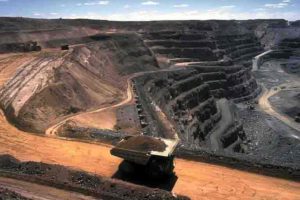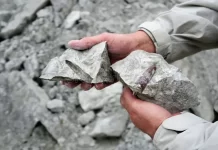
Mining
Mining is the extraction from the earth of valuable minerals or other geological materials, usually from a deposit of ore, lode, vein, seam, reef or placer. These deposits form an economically interesting mineralized package for the miner. “Related: What Is Gold Mining? How Is Gold Mined?”
Ores recovered through mining include metals, coal, oil shale, gemstones, calcareous stone, chalk, rock salt, potash, gravel, and clay. Mining is required to obtain any material that can not be grown or artificially created in a laboratory or factory through agricultural processes. Mining in a wider sense includes extraction of any non-renewable resource such as petroleum, natural gas, or even water.
What are the main mining methods?
Four main methods of mining are available: underground, open surface (pit), placer and in-situ mining.
- Underground mines are more expensive and often used to reach deposits that are deeper.
- Surface mines are usually used for deposits that are shallower and less valuable.
- Placer mining is used in river channels, beach sands, or other environments to sift valuable metals from sediments.
- In-situ mining, primarily used in uranium mining, involves dissolving the existing mineral resource and then processing it on the surface without moving rock from the ground.
Mining techniques
Surface mining
Surface mining is done by removing (stripping) surface vegetation, dirt, and, if necessary, layers of bedrock in order to reach buried ore deposits. Techniques of surface mining include: open-pit mining, which is the recovery of materials from an open pit in the ground, quarrying, identical to open-pit mining except that it refers to sand, stone and clay; Strip mining consisting of stripping off surface layers to reveal ore / seams below ; and mountaintop removal, commonly associated with coal mining, involving removing the top of a mountain to reach deposits of ore at depth.
Underground mining
Sub-surface mining consists of digging into the earth tunnels or shafts to reach the deposits of buried ore. Ore is brought to the surface through tunnels and shafts for processing, and waste rock for disposal. Sub-surface mining can be classified according to the type of shafts used, the method of extraction or the technique used to reach the deposit. Drift mining uses horizontal access tunnels, diagonally sloping access shafts are used by slope mining, and shaft mining uses vertical access shafts. Mining requires different techniques in hard and soft rock formations.
Highwall mining
Highwall mining is another surface mining form that has evolved from auger mining. A continuous miner driven by a hydraulic Pushbeam Transfer Mechanism (PTM) penetrates the coal seam. A typical cycle includes sumping (launch-pushing forward) and shearing (cutterhead boom raising and lowering to cut the entire height of the coal seam).
As the cycle of coal recovery continues, the cutterhead is gradually launched at 19.72 feet (6.01 m) into the coal seam. The Pushbeam Transfer Mechanism (PTM) then automatically inserts a 19.72-foot (6.01 m) long rectangular Pushbeam (Screw-Conveyor Segment) between the Powerhead and the cutterhead into the center section of the machine.










